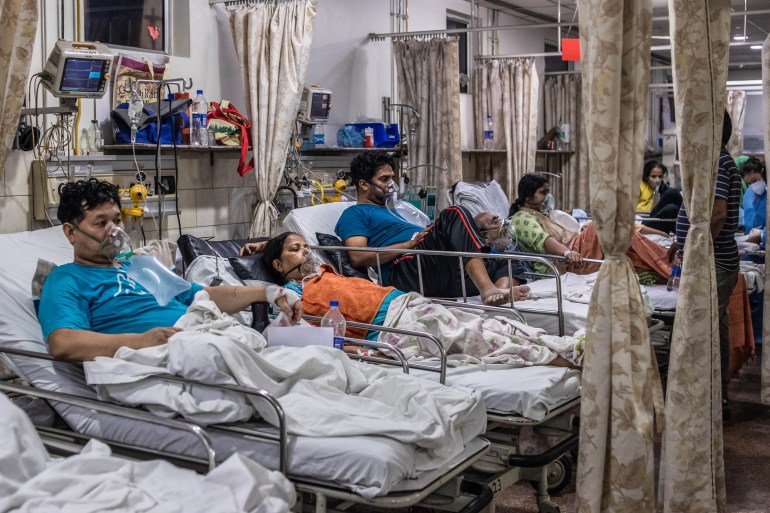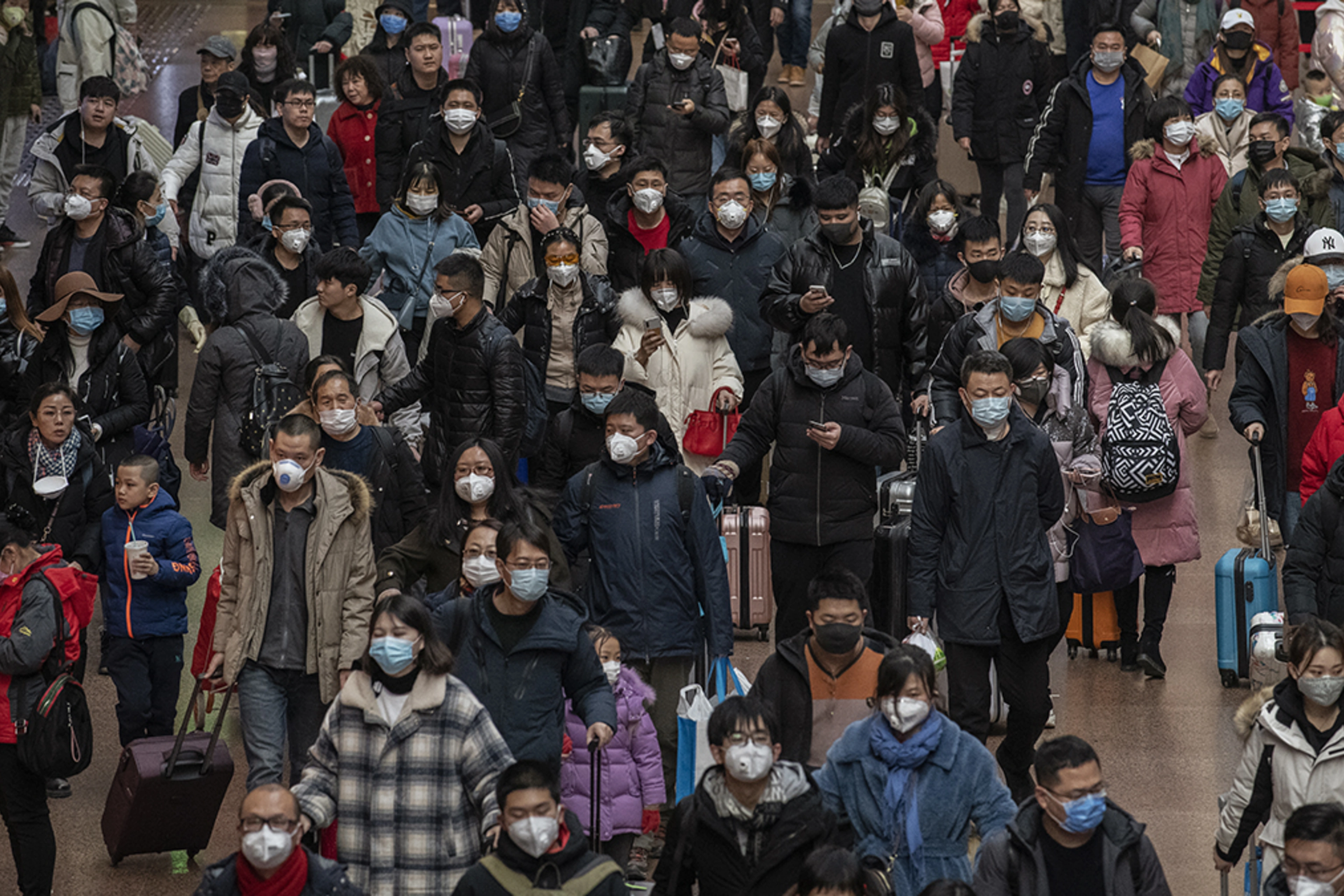Has Covid-19 Pandemic become an opportunity for Economic and Diplomatic Progression?
Has Covid-19 Pandemic become an opportunity for Economic and Diplomatic Progression?
It has been said that invention is the mother of necessity, but 2020 has enhanced this statement. By adding innovation to the invention. If an invention is the mother of necessity, then innovation is the mother of that invention. The outbreak of coronavirus has proven a tough time for people around the world. Economies have fallen, turmoiled nations like Yemen are on the brink of starvation and people have lost jobs. But one thing that has become very apparent in these times is the chance to make use of the pandemic as an opportunity to create an alternate model of economic and diplomatic sustainability.

India has now become the 3rd country that is worst hit by COVID-19, surpassing Brazil and the UK. It has been extremely unfortunate for India, but at the same time, India has felt its tremors that COVID has brought. It has not only shown the lacking health Infrastructure of India but has also put India’s self-sufficiency in question. The country has faced one of the worst crisis surrounding the migrant worker during the Pandemic wherein, scores of people were on the road making an effort to go back home irrespective of putting their life on the line.
Almost half of the year has passed and now India is coming to terms with the ‘new normal’. Where the initial part of this year was majorly focused on the disease and its prevention now the media attention has shifted to the fact of living with COVID-19.

In the successive addresses over the past 5 months, the PM has advised the citizen to be calm and not panic in this difficult situation. He has also encouraged self-sufficiency through the innovation and invention under the banner of Atmanirbhar Bharat. However, no successive details except the 20lakh crore economic package that constitutes 1% of the total GDP.
Aatmanirbhar Bharat Abhiyan has been one of the major policy approaches that Prime Minister has come out with. The government claims that India is treading on the ladder of self-sufficiency starting from the production of PPE kits which is estimated to be 2 lakh per day. The government also claims that this production is an apt example of transforming India into a self- sufficient country since India had started with zero production of PPE kits which has now reached a tremendous level.
Aatmanirbhar Bharat has been made into a long-term policy that focuses on strengthening the country from within to fight not only against COVID but also the unforeseen circumstance of the future. The five pillars or the focus areas of the policy include Economy, Infrastructure, System, Vibrant Demography, and Demand.
However, if closely looked at, the focus areas are generalized and they don’t paint a clear picture as to which part of the economy would be focused on, or which sector would receive the most amount of infrastructure development. Also, the pillar of the system is a little ambiguous as to which system of working, does the policy talks of. There is no specification as to how this policy will boost these sectors.
In the next step of the Aatmanirbhar Bharat Abhiyan, the policy has been divided into 5 phases. In the first phase, the policy would focus on Business including MSMEs, the second phase includes poor, including migrants and farmers, phase three would cover agriculture, phase four indicates to some new horizons or growth and the last phase calls for government reforms and enablers. These phases also give a glimpse of the ambiguity of the policy. Only the first describes clearly the area where the government is going to work.

The second and the third phase are both focused on agriculture, but a generic view to agriculture would not suitable for a country where 70% of its people are indulged in direct or indirect agricultural practices. Also, the policy isn’t focused as to which part of the agricultural activity will be the policy focus on, will there be another Green Revolution or will agriculturists get some tax benefits, nothing is specific.
The fourth phase can be called the scope of new developments, wherein this phase focuses on expanding the horizons. It has not been made clear as to which horizons of which sector would be expanded or would an innovative cell be set up to maximize the resources of the country. The fifth phase calls for government reforms, but what would these reforms pertain to has been a secret, since the fifth phase claims that it could work out the government reforms, however, this would be notable that where these reforms would be applied.
Since COVID has resulted in re-shaping of the economy and the working of governments, it would be notable how self-reliant India would work to achieve its role.
The Government has made the fact very apparent that it is going to change the existing state of the country and various sectors that demand attention. However, the structure of Aatmanirbhar Bharat might ignite hope but is not seemingly lucrative. The policy has made it to the headlines right when COVID started to spread rapidly. The roll-out of the policy doesn’t explain its working in great detail, has it rolled out as a diversion to pacify the citizen?

The central government doesn’t agree with the fact that India is under stage 3 of the pandemic. India denies that community transmission stage, even though it has touched the 11.9 lakh cases. In place of immediately tending to the health infrastructure and economic revival on top priority, policies like Aatmanirbhar are being put in place to pacify the citizen and make them believe that India is on a steady road of progress.
The pandemic has become an opportunity to roll out such policies that would make people believe the other way. However, the government is just re-opening the already slowed economy in phases. The reopening of the economy at a steady pace which is the need of the hour, but instituting it a part of the policy isn’t. The future of Self-Reliant India would be something to vouch for. The government should motivate the already existing entrepreneurial culture of India and should channelize this energy in job creation.
The attention from the worsened conditions of these times has also been shifted to increasing diplomatic changes that the world is going through.
China has been globally condemned and held responsible for the outbreak of COVID. This made many American enterprises change their production units from China to India since India offers a similar kind of environment. This has made China in creating problems for India in the form of an ongoing land dispute.

The Indian media has drifted from the pandemic and its management to the cause of patriotism, boycotting Chinese goods and services. This also resulted in banning the 59 Chinese apps from the Indian market. On the other side, it has been witnessed that the US and the UK navy are sailing in the South China sea as a posing threat to China. This glaring news of China being sieged from all sides is making the headlines.
However, there is no mention of global cooperation on the pandemic in the traditional media platforms. The Chinese claim of Indian territory does require attention, but this issue is slowly replacing the ongoing issue in the country which is the Pandemic.
At the same time, PM Modi has grabbed this opportunity of leading the faction against China and improve his diplomatic relations. The PM has a special address in a telecast that has talked about the Indo-US relations and their cooperation. Even when India has crossed the 11-lakh mark on the world map of Corona outbreak, the address revolved around the diplomatic relations.

In the earlier stage of COVID, when hydroxychloroquine was found to be effective against reducing COVID, the first talk of export to the US was on the cards. This has resulted in asking one question- has pandemic become an apt occasion of improving diplomatic relations of the country.
Ever since the BJP led government came into power in 2014, PM, Modi has taken the road of improving India’s image worldwide and putting India on the world map in a better position. The opportunity of India’s effectiveness of tackling with COVID has also been popularized. Worrying for India’s diplomatic image cannot be more important than worrying for nearly 5 lakh active COVID patients.
The pandemic might have turned in an opportunity to get a better position in global politics. The Pandemic has become a center for change and of shifting power blocs. However, the foremost concern should at reducing the increasing numbers that are exposing the country to far-reaching threats in the long term.

India is still in a risky position if the pandemic is to be talked about. The numbers are increasing, two and three-tier cities are becoming the new hot spots. The lifting of the domestic travel ban has somewhat contributed to the spread of the virus. The economy is being reopened steadily but the shops are vacant, people are distressed to venture out. The definition of the new era is defined by the ‘new normal’ concept, but still, nobody talks of economic, political, and social sustainability that ‘the new normal’ has overshadowed.




